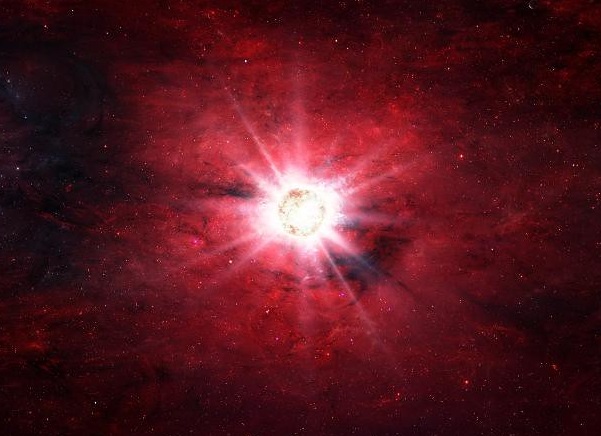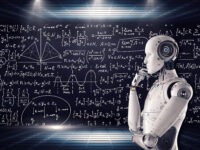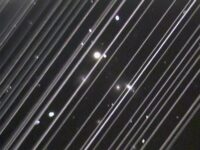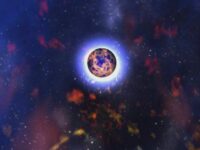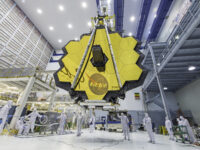Only 0.1 percent. Without artificial intelligence (AI), cutting-edge astral observatories around the world may be able to comprehensively classify only 0.1 percent of the approximately 1 million supernovae observed yearly. Ashley Villar of Columbia University, along with many other experts, is aware of the limitations of data collection using human techniques. In response, these experts have developed an artificial intelligence program that conducts data analysis rapidly and accurately enough to make traditional techniques for observing supernovae increasingly irrelevant. The sheer amount of potential discoveries made possible by the pattern-based conclusions of a nuanced and efficient AI is overwhelming, but it is a clear step forward in understanding the magnificent explosions of deep space.
Essentially, supernovae occur when a white dwarf or massive star experiences extreme physical events that often result in its explosive transformation into a neutron star or black hole, respectively.
Essentially, supernovae occur when a white dwarf or massive star experiences extreme physical events that often result in its explosive transformation into a neutron star or black hole, respectively. White dwarfs lacking nuclear fuel may accumulate mass from nearby stellar objects or mergers, which causes core instability, nuclear fusion, and an eventual explosion. Conversely, massive stars lacking nuclear fuel may absorb surface mass into their core, causing gravitational instability, collapse, and an explosion. The light produced by these explosions can appear over 100 times more luminous than the initial solar luminosity.
Optical spectroscopy is the traditional method of supernova classification, where the appearance of certain light waves (recorded and observed on a color spectrum) indicates the presence of certain elements associated with the exploding star. Unfortunately, spectroscopy is a slow and resource-intensive process, making it virtually impossible to observe and record the colorful spectra from every single supernova. A quicker classification method uses photometric light curves emitted by supernovae; however, this method is far more difficult for humans than for AI programs trained to recognize explosion patterns. Characteristics of a star, and phenomenological behavior of its supernova, correlate with certain spectra and certain light curves. By observing these curves, particularly the evolution of the visible brightness of a supernova, AI can categorize supernovae similar to the categorization provided by spectroscopy.
Furthermore, this relationship between spectra and light curves is important for developing the AI program itself. The Pan-STARRS1 Medium Deep Survey (PS1-MDS), conducted with a telescope based at the University of Hawaii, contains data from over 5,000 supernovae events — its sheer breadth is crucial to developing a more accurate AI. With this unprecedented study, experts recorded traditional spectra for over 500 supernovae, which were then used to train the AI. Once the AI recognized correlations between spectra and classifications of these recorded supernovae, the AI learned to associate the light curves of those same supernovae with the spectra-based classifications and characteristics. As a result, the AI can now classify supernovae only using light curves. It is the large set of observations of real spectra from these real supernovae that acts as a revolutionary cheat sheet to initiate the machine learning process. Typically, the lack of spectra data prompts experts to train AI with synthetic data, which often results in AI that cannot properly account for the unpredictability and nuance of real supernovae.
It is the large set of observations of real spectra from these real supernovae that acts as a revolutionary cheat sheet to initiate the machine learning process.
Thus, the use of empirical data to train the AI provides more accurate classification of supernovae as shown by the Python-based SuperRAENN and the subsequently inspired Superphot. Villar et al developed SuperRAENN (recurrent autoencoder neural network) through semi-supervised data training, the concept which Griffen Hosseinzadeh et al reconstituted into Superphot using a refined classification methodology. Superphot used light curves to quickly classify 2,315 supernovae with an 82 percent rate of accuracy, a stark contrast to the previous painstaking spectroscopy. However, the process is imperfect, and some similar classifications are frequently misassigned because of the extremely nuanced nature of the light curves and explosive phenomena.
Noting these imperfections, experts continue to develop these AI programs and even allow public access to study results, data, and code. As astronomers collect more data, particularly through the online integration of observatories like Chile’s Vera C. Rubin Observatory, the training of AI may become increasingly comprehensive and accurate. By enhancing the scientific community’s current understanding of both anomalies and holistic trends in supernovae, AI also contributes to the understanding of other cosmic phenomena like black holes and the intergalactic dispersion of elements. It remains to be seen what other mysterious aspects of space and supernovae can be illuminated when artificial intelligence turns its eye to the night sky.
Image Source: Flickr
